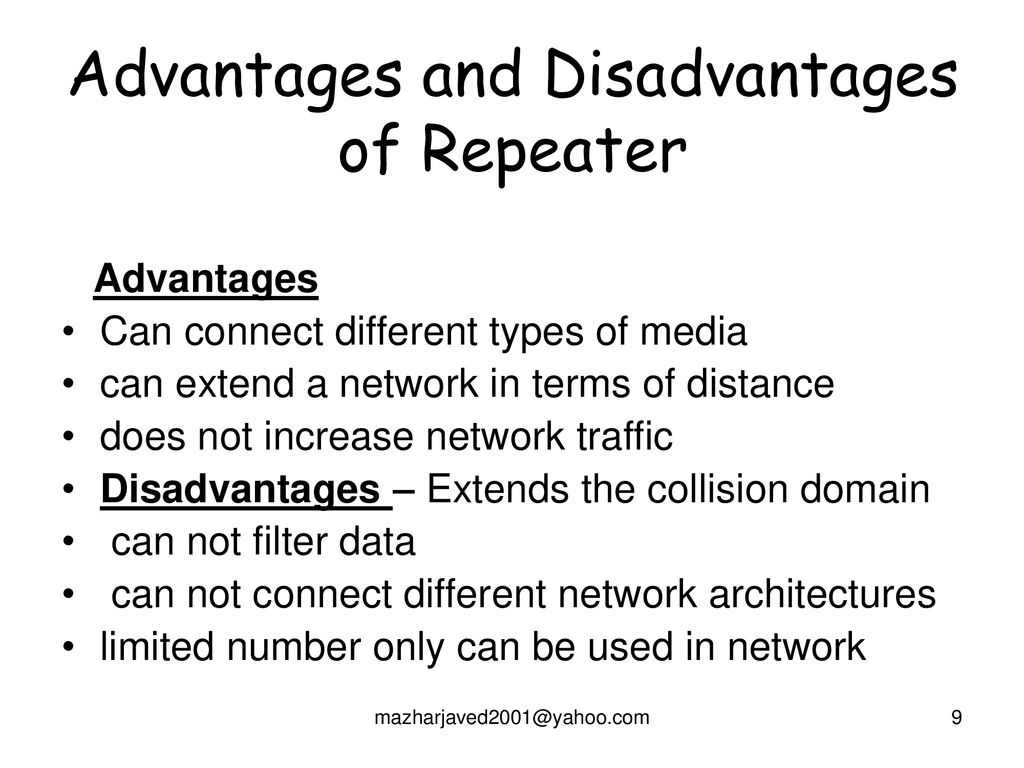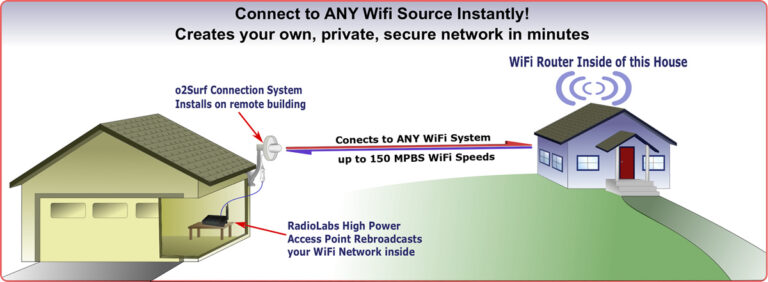What Are The Disadvantages Of A Repeater?
A repeater is a device used to regenerate signals that have become weak or distorted due to distance or interference on a network. While a repeater can be used to extend the range of a network and increase signal strength, there are also some associated disadvantages. These include increased network latency, the possibility of packet collisions, and a greater chance of network security threats. Additionally, repeaters are limited in terms of how far they can extend a network, which may be an issue for larger organizations.
Definition of a Repeater
A repeater is a device that is used to extend the range of a wireless signal, allowing for longer distances to be covered. It receives a signal, amplifies it, and then retransmits it. This is especially useful in areas where signal strength is low or the distance covered by the signal is too far. Repeaters can help to reduce the number of dead zones or “black spots” that exist in a wireless network.
However, there are some drawbacks to using a repeater. For instance, the amplifier inside the repeater can create interference with other signals in the area. This can also reduce the overall speed of the network, as the repeater has to process the signal before retransmitting it. Additionally, the repeater must be compatible with the wireless network it is being used with, and it will require power in order to operate, which may not always be available in some areas. Finally, the signal can only be amplified by a certain amount, and the coverage range of the repeater may be limited depending on its design and features.
Overall, while a repeater can be a useful tool for extending the range of a wireless signal, it is important to be aware of its limitations and potential drawbacks.
How a Repeater Works
A repeater is a device that amplifies a signal, allowing it to travel further and cover a larger area than it would otherwise be able to. It is commonly used in communication networks to extend the range of a signal, allowing it to traverse further distances. To understand the potential disadvantages of a repeater, it is important to first understand how they work.
A repeater takes an incoming signal, amplifies it and then retransmits it. This increases the signal’s strength, allowing it to travel further. However, this process also introduces delay, as the signal must first be amplified and then retransmitted. This can cause significant delays in data transmission, which can be an issue in real-time applications.
The signal amplification process also reduces the quality of the signal, as noise is introduced during the amplification process. This can lead to increased signal distortion and errors, which can cause problems with data transmission. Additionally, repeaters are subject to interference, which can further reduce the quality of the signal.
Finally, repeaters can be costly to install and maintain, and may not be the most cost-effective solution in some cases.
In conclusion, while repeaters can be an effective way to extend a signal’s range, they can also introduce significant delays and reduce signal quality. They can also be costly to install and maintain, making them a less than ideal solution in some cases.
Limitations of a Repeater
A repeater is a device used in networking to extend the range of a signal by regenerating it for transmission. While it can significantly extend the range of a signal, there are several drawbacks to consider when using a repeater.
First, the use of a repeater can introduce latency to the network. In order for the repeater to regenerate the signal, it must pause and process the data before forwarding it on. The longer the data is held, the higher the latency and the slower the network response time.
Second, a repeater will only extend the range of a signal, and will not increase its speed. This means that while it can extend the range of a signal, it will not increase the rate at which data can be transferred.
Third, repeaters can be difficult or expensive to install due to their physical size and power requirements. Proper installation requires that the repeater be placed in the right spot to maximize signal strength and range.
Finally, repeaters are limited when it comes to the amount of traffic they can handle. Since a repeater is essentially acting as a bridge between two networks, it can only handle a certain amount of traffic before becoming overloaded.
Overall, while repeaters can be a great way to extend the range of a signal, they do have some limitations to consider. Before using a repeater, it is important to understand the potential drawbacks to ensure that the network meets the desired needs.

Potential Issues with a Repeater
A repeater is an invaluable device for improving the range and signal strength of a wireless network. However, while it can provide many benefits, there are also some potential issues with using a repeater. One of the main drawbacks of a repeater is interference from other devices. While a repeater can increase the range and strength of a signal, it also amplifies any potential interference from other wireless devices or networks. This means that in areas with high levels of wireless traffic, a repeater may be less effective.
Another potential issue is the “double NAT” effect. A repeater acts as a middle-man between devices and the router, creating two networks. This can cause problems when a device is trying to communicate with the router, as the double NAT effect can cause problems with traffic routing.
Finally, a repeater is only as good as its placement. If the repeater is placed too far away from the router, or in an area with poor signal, it will not be able to amplify the signal effectively. Additionally, if the repeater is placed between walls or other obstructions, this can also reduce the effectiveness of the signal.
These potential issues with a repeater should be taken into consideration before deploying one. However, with careful placement and configuration, a repeater can be a great way to improve the range and signal strength of a wireless network.
Security Concerns with a Repeater
A repeater is a device used to extend the reach of a wireless network. It receives incoming signals from a wireless router and then amplifies and sends them further away. While this can be a great way to extend the range of your network, there are some security concerns that come with using a repeater.
The biggest security issue with a repeater is its lack of authentication. Since a repeater is designed to receive and amplify signals, it also amplifies any malicious traffic that it receives. This means that any malicious data sent to the repeater can be sent out to the entire network. As such, it’s important to make sure that the repeater is properly secured and that it is not being used to spread malicious traffic.
Another security concern is that a repeater can be used to bypass the security measures on your wireless network. By using a repeater, an attacker can gain access to the wireless network without having to authenticate. This means that attackers can gain access to your private data without you knowing. It’s important to make sure that your repeater is not being used to bypass the security measures on your network.
Finally, a repeater can also be used to create a “man-in-the-middle” attack. In this type of attack, an attacker can intercept and manipulate data between two devices on the network. This can be used to steal private data or to inject malicious code into the network. As such, it’s important to make sure that the repeater is not being used to carry out this type of attack.
Overall, it’s important to be aware of the security concerns of using a repeater. By taking the necessary steps to secure the repeater, you can ensure that your wireless network is kept safe from malicious attackers.
Alternatives to a Repeater
A repeater is a device that is used to extend the distance of a network signal. While a repeater can be a viable solution for many, it is important to note that there are several disadvantages associated with its use that should be considered. Alternatives to a repeater include using devices such as an Ethernet extender, a bridge, a switch, or a router.
An Ethernet extender is a device that is used to extend the distance of an Ethernet cable, allowing for the connection of two different networks. Ethernet extenders are typically used in larger networks, such as corporate networks, as they are more reliable and secure than a repeater.
A bridge is a device that connects two different networks together. Bridges are typically used to connect two LANs that use different technologies, such as Ethernet and Wi-Fi. Bridges are usually more reliable than a repeater as they can be configured to prioritize traffic.
A switch is a device that connects multiple computers or devices to the same network. Switches are typically used to increase the bandwidth of a network and can be used to connect multiple computers or devices to the same network.
Finally, a router is a device that connects a network to the Internet. Routers are typically used to provide a secure connection to the Internet and are more reliable than a repeater as they can be configured to prioritize traffic.
In conclusion, while a repeater can be a viable solution for many, there are several disadvantages associated with its use that should be considered. Alternatives to a repeater include using devices such as an Ethernet extender, a bridge, a switch, or a router. Each of these devices has its own advantages and disadvantages and should be considered when determining the best solution for a particular network.
FAQs About the What Are The Disadvantages Of A Repeater?
1. What problems can arise when using a repeater?
A: A common issue when using a repeater is that it can create a broadcast storm. This is when a continuous signal is sent, which can cause network congestion, and can even cause the entire network to crash.
2. How can a repeater affect network performance?
A: A repeater can reduce network performance by creating more collisions. Collisions occur when two or more devices transmit data at the same time. The repeater amplifies the signal, which can cause increased collisions on the network.
3. Is there a limit to the number of repeaters that can be used on a network?
A: Yes. The maximum number of repeaters that can be used on a network is five. This limit is due to the fact that any more than five repeaters can cause signal degradation, which can negatively affect network performance.
Conclusion
In conclusion, the most significant disadvantage of a repeater is that it amplifies the signal, which can increase the susceptibility of the signal to interference. Additionally, repeaters are expensive, add latency, and can create security problems. As a result, when deciding whether to use a repeater, one must weigh the advantages and disadvantages of the device.






